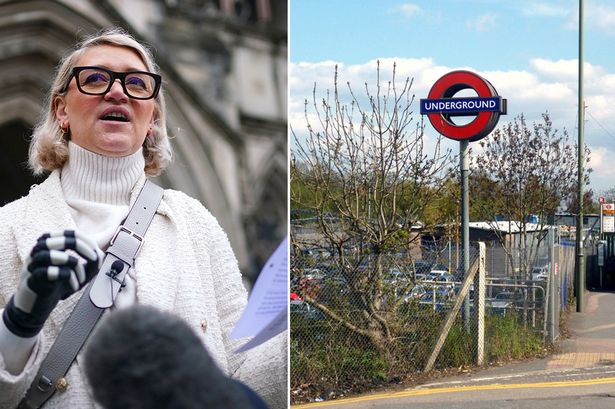The harrowing incident involving Sarah de Lagarde at High Barnet station serves as a stark reminder of the hidden dangers present in everyday environments and the potential for seemingly minor oversights to escalate into life-altering tragedies. De Lagarde’s fall into the gap between the platform and a train resulted in the crushing injuries that necessitated the amputation of her right arm and leg, a devastating physical and emotional trauma compounded by the chilling realization that she was trapped and unable to summon help. The failure of her phone’s facial recognition software to recognize her injured face further amplified her distress, underscoring the limitations of technology in critical situations and the urgent need for redundant safety measures in public spaces.
The circumstances surrounding De Lagarde’s fall remain under investigation, with authorities working to determine the precise sequence of events that led to her becoming trapped. Potential factors include the width of the platform gap, the presence or absence of adequate safety barriers, the speed and positioning of the train, and any potential contributing factors related to De Lagarde’s actions prior to the incident. Understanding the root causes of this accident is crucial for implementing preventative measures to avoid similar tragedies in the future. Furthermore, the incident raises critical questions about the adequacy of current safety protocols at train stations and the responsibility of transport authorities to ensure the well-being of passengers.
Beyond the immediate physical trauma of the amputation, De Lagarde faces a long and arduous road to recovery. This recovery encompasses not only the physical rehabilitation required to adapt to life without her right arm and leg but also the profound psychological and emotional challenges that accompany such a traumatic experience. The loss of limbs represents a significant alteration to one’s body image, sense of self, and ability to perform everyday tasks. De Lagarde will require extensive physical therapy, occupational therapy, and potentially prosthetic fittings to regain some level of independence and functionality. Alongside the physical challenges, she will also need ongoing psychological support to process the trauma, manage phantom limb pain, and navigate the emotional complexities of adapting to her new reality.
The failure of De Lagarde’s phone to recognize her injured face adds another layer of complexity to this tragic incident. While facial recognition technology has become increasingly prevalent in modern society, its reliance on specific facial features renders it vulnerable to malfunctions in situations involving injuries or alterations to one’s appearance. This incident highlights the potential dangers of relying solely on such technology in emergency situations. It underscores the need for backup systems and alternative methods of contacting emergency services, especially in environments where accidents are a possibility. Furthermore, it raises questions about the ethical implications of deploying facial recognition technology without fully understanding its limitations and potential consequences.
The incident involving Sarah de Lagarde has prompted renewed calls for improved safety measures at train stations across the country. Advocates for passenger safety are urging transport authorities to review existing regulations and infrastructure, with a focus on minimizing the risks of platform falls and ensuring that passengers have multiple avenues for seeking help in emergencies. Proposed measures include narrowing platform gaps, installing platform edge doors, enhancing platform lighting and signage, and implementing more robust emergency communication systems. These improvements are essential not only to prevent future accidents but also to instill a sense of security and confidence among passengers. Train stations should be spaces where individuals feel safe and protected, and the implementation of comprehensive safety measures is paramount to achieving this goal.
This tragic incident serves as a wake-up call for both individuals and institutions. For individuals, it underscores the importance of exercising caution in potentially hazardous environments and being aware of the limitations of technology. For institutions, it highlights the critical need for proactive safety measures, robust emergency protocols, and ongoing investment in infrastructure and technology that prioritizes the well-being of all individuals. By learning from this devastating event and taking decisive action to improve safety standards, we can strive to create a world where such tragedies are prevented and individuals can navigate public spaces with confidence and peace of mind. The focus must shift from reactive measures to proactive strategies that anticipate and mitigate potential risks, ensuring that train stations and other public spaces are designed and maintained with the highest standards of safety and accessibility in mind.














